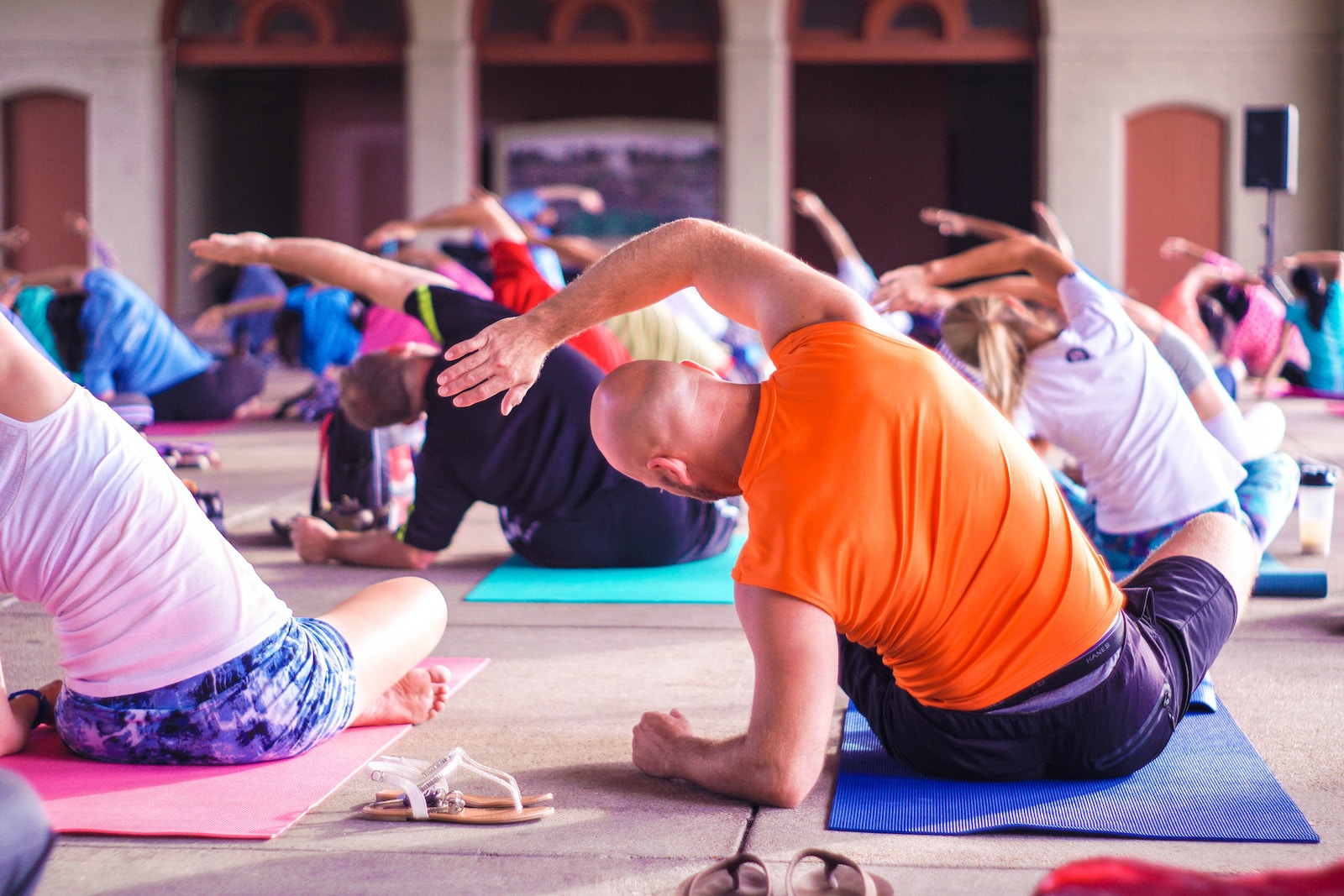Weightlifting is not just about bulging muscles and intimidating figures. It is a powerful tool that can unlock your true potential, both physically and mentally. By embracing strength through weightlifting, you can experience a multitude of benefits that extend far beyond the gym. This article will explore the world of weightlifting and its transformative effects on your mind, body, and overall well-being.
The Physical Benefits of Weightlifting
Weightlifting offers numerous physical benefits that can significantly impact your overall fitness and well-being. Let’s delve into some of these benefits:
-
Increased Muscle Strength and Definition: Weightlifting involves the use of resistance, such as dumbbells, barbells, and machines, to challenge your muscles. Through consistent training, your muscles adapt and grow stronger, leading to increased strength and improved definition. Not only does this enhance your physical appearance, but it also boosts your functional strength, making everyday tasks easier.
-
Enhanced Bone Health: Weightlifting is a weight-bearing exercise that places stress on your bones, stimulating them to become stronger and denser. This can reduce the risk of osteoporosis and improve overall bone health. By engaging in weightlifting, you can fortify your skeletal system and maintain its integrity as you age.
-
Improved Metabolic Function: Weightlifting, especially when done with high intensity, can boost your metabolism. This means your body becomes more efficient at burning calories, even at rest. A higher metabolic rate can aid in weight loss and weight maintenance. Additionally, weightlifting helps preserve lean muscle mass, which further contributes to an elevated metabolism.
-
Increased Cardiovascular Fitness: Contrary to popular belief, weightlifting can also improve your cardiovascular health. Compound movements like squats, deadlifts, and bench presses engage multiple muscle groups, elevating your heart rate and improving cardiovascular endurance. Incorporating cardiovascular exercises alongside weightlifting can further enhance your overall fitness level.
-
Enhanced Flexibility and Mobility: Weightlifting involves performing various exercises through a full range of motion, which helps improve flexibility and joint mobility. This can reduce the risk of injury and enhance overall athletic performance. By incorporating dynamic stretches and mobility exercises into your weightlifting routine, you can maintain optimal flexibility and range of motion.
Incorporating weightlifting into your fitness routine can provide a multitude of physical benefits, from increased muscle strength and bone health to improved metabolic function and cardiovascular fitness. The next section will explore the mental benefits that weightlifting can offer.
The Mental Benefits of Weightlifting
In addition to the physical advantages, weightlifting also has a profound impact on your mental well-being. Let’s explore some of the mental benefits of weightlifting:
-
Boosted Confidence and Self-Esteem: As you progress in your weightlifting journey and witness tangible improvements in your strength and physique, your confidence and self-esteem soar. This newfound self-belief extends beyond the gym and positively impacts all areas of your life. Feeling strong and accomplished can empower you to tackle challenges and reach new heights.
-
Stress Relief and Mental Well-being: Engaging in weightlifting releases endorphins, the feel-good hormones, which can help combat stress, anxiety, and depression. The focus required during weightlifting sessions provides a mental escape and promotes a sense of calm and well-being. Regular weightlifting sessions can be a therapeutic outlet to alleviate daily stressors.
-
Improved Cognitive Function: Regular weightlifting has been shown to enhance cognitive abilities such as memory, attention, and problem-solving skills. The increased blood flow and oxygen supply to the brain during exercise can improve brain function and overall mental sharpness. Weightlifting can serve as a cognitive boost, enhancing your productivity and mental performance in various aspects of life.
-
Better Sleep Quality: Weightlifting has been linked to improved sleep quality and duration. The physical exertion and release of endorphins during weightlifting can help regulate sleep patterns, leading to a more restful and rejuvenating sleep. Quality sleep is crucial for overall well-being and optimal functioning of the mind and body.
-
Increased Discipline and Mental Resilience: Weightlifting requires dedication, consistency, and discipline to achieve desired results. This mindset translates into other aspects of life, fostering mental resilience and the ability to overcome obstacles. The discipline cultivated through weightlifting can positively impact your personal and professional life, helping you stay focused and determined.
By engaging in weightlifting, not only can you reap physical benefits, but you can also experience a myriad of mental advantages, including boosted confidence, stress relief, improved cognitive function, better sleep quality, and increased discipline. Now that you understand the benefits, let’s explore how you can get started with weightlifting.
Getting Started with Weightlifting
Embarking on a weightlifting journey can be both exciting and intimidating. Here are some key steps to help you get started:
-
Consult with a Professional: Before diving into weightlifting, it’s crucial to consult with a qualified fitness professional or personal trainer. They can assess your current fitness level, provide guidance on proper form and technique, and create a personalized training plan tailored to your goals. A professional’s expertise will ensure you start on the right track and minimize the risk of injury.
-
Start Slow and Focus on Technique: When starting out, it’s essential to prioritize proper form and technique over heavy weights. Mastering the fundamentals will prevent injuries and lay a strong foundation for future progress. Begin with lighter weights and gradually increase the load as you become more comfortable with each exercise.
-
Gradually Increase Intensity: As you become more comfortable with weightlifting, gradually increase the intensity by adding weight, increasing repetitions, or reducing rest time between sets. Progressive overload is key to continual growth and improvement. However, it’s essential to listen to your body and avoid pushing beyond your limits to prevent injuries.
-
Incorporate Compound and Isolation Exercises: To maximize your training, include a combination of compound exercises (which engage multiple muscle groups) and isolation exercises (which target specific muscles). This ensures a well-rounded workout that targets all major muscle groups. Compound exercises, such as squats, deadlifts, and overhead presses, provide the foundation for strength and overall muscle development.
-
Prioritize Rest and Recovery: Rest and recovery are integral components of any weightlifting program. Allow sufficient time for your muscles to repair and adapt, and ensure you’re getting adequate sleep and nutrition to support your training. Overtraining can hinder progress and increase the risk of injuries, so listen to your body and prioritize rest days.
-
Track Your Progress: Keep a record of your workouts, including the weights used, repetitions performed, and any notes on how you felt during the session. Tracking your progress will help you identify patterns, set new goals, and stay motivated. Celebrate your achievements along the way and use your progress as a source of motivation to keep pushing forward.
Conclusion
Weightlifting is a transformative practice that can unlock your potential, both physically and mentally. By embracing strength through weightlifting, you can experience increased muscle strength, enhanced bone health, improved metabolic function, and cardiovascular fitness. Moreover, weightlifting offers a range of mental benefits, including boosted confidence, stress relief, improved cognitive function, and better sleep quality. Remember to start slow, prioritize technique, gradually increase intensity, and prioritize rest and recovery. So, why wait? Embrace weightlifting and unlock your true potential today!
Note: This article is written in markdown format.
FAQ
Q: What are the physical benefits of weightlifting?
A: Weightlifting can increase muscle strength and definition, enhance bone health, improve metabolic function, and increase cardiovascular fitness.
Q: What are the mental benefits of weightlifting?
A: Weightlifting can boost confidence and self-esteem, provide stress relief and mental well-being, improve cognitive function, promote better sleep quality, and increase discipline and mental resilience.
Q: How can I get started with weightlifting?
A: To get started with weightlifting, consult with a professional, focus on proper technique, gradually increase intensity, incorporate compound and isolation exercises, prioritize rest and recovery, and track your progress.
Q: What are some tips for weightlifting beginners?
A: Beginners should prioritize technique over heavy weights, gradually increase intensity, include a combination of compound and isolation exercises, prioritize rest and recovery, and track their progress.



